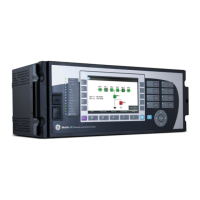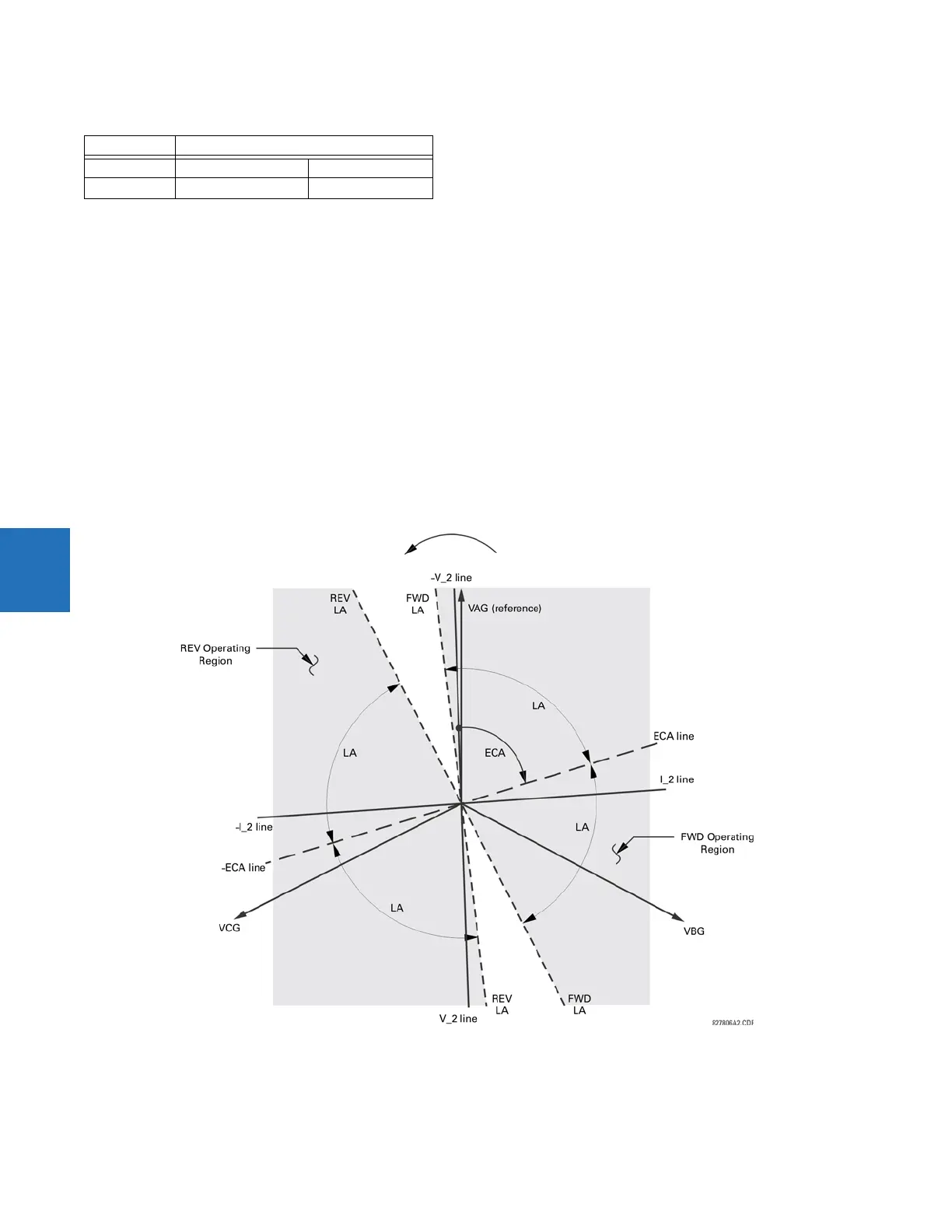5-290 L90 LINE CURRENT DIFFERENTIAL SYSTEM – INSTRUCTION MANUAL
GROUPED ELEMENTS CHAPTER 5: SETTINGS
5
Table 5-40: Negative-sequence directional unit
Z_offset is the offset impedance, for which magnitude is the OFFSET setting and angle is the FWD ECA.
The negative-sequence voltage must be greater than the Voltage Cutoff Level setting specified in the
PRODUCT SETUP
DISPLAY PROPERTIES
menu to be validated for use as a polarizing signal. Additionally, when offset impedance is applied and
negative-sequence current is above 0.2 pu, compensated negative-sequence voltage -V_2 + Z_offset x I_2 has to be
above the display voltage cutoff level in order to discriminate fault direction; otherwise when negative-sequence current is
less than 0.2 pu, -V_2 is then used as the polarizing signal. If the polarizing signal is not validated, neither forward nor
reverse indication is given. The following figure explains the usage of the voltage polarized directional unit of the element.
It shows the phase angle comparator characteristics for a phase A to ground fault, with settings of
ECA = 75° (element characteristic angle = centerline of operating characteristic)
FWD LA = 80° (forward limit angle = ± the angular limit with the ECA for operation)
REV LA = 80° (reverse limit angle = ± the angular limit with the ECA for operation)
The element incorporates a current reversal logic: if the reverse direction is indicated for at least 1.25 of a power system
cycle, the prospective forward indication is delayed by 1.5 of a power system cycle. The element emulates an
electromechanical directional device. Larger operating and polarizing signals result in faster directional discrimination,
bringing more security to the element operation.
Figure 5-159: Negative-sequence directional characteristic
The forward-looking function is designed to be more secure compared to the reverse-looking function, so use the forward-
looking function for the tripping direction. The reverse-looking function is faster compared to the forward-looking function,
so use the reverse-looking function for the blocking direction. This allows for better protection coordination. Take this bias
Direction Compared phasors
Forward –V_2+Z_offset× I_2 I_2 × 1∠ECA
Reverse –V_2 + Z_offset × I_2 –(I_2 × 1∠ECA)

